Anticipating the Next iPhone Release: Insights and Expectations
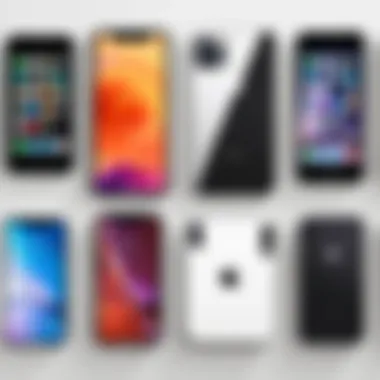
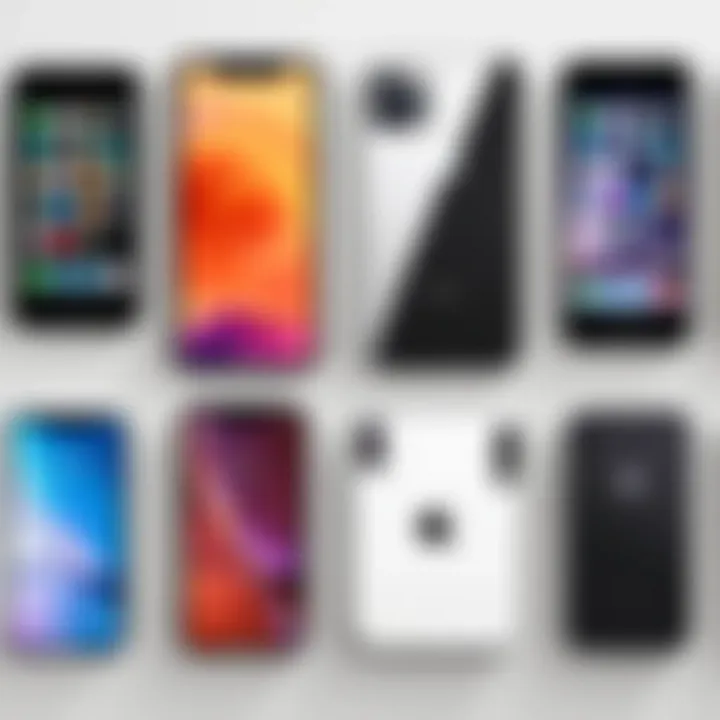
Intro
With each passing year, anticipation builds for Apple's next iPhone release. For tech enthusiasts and early adopters, the next model often represents not just an evolution in technology, but a transformation in user experience. This article aims to provide a thorough exploration of the upcoming iPhone's features, specifications, and the broader implications of its release.
Understanding the context in which Apple operates is crucial. Analyzing their historical release patterns reveals a company that consistently adapts to changing market demands while pushing the envelope in smartphone technology. This insights guides us towards understanding what we might expect in the future.
Furthermore, the article delves into current market trends surrounding smartphone technology. The landscape is shifting rapidly as competitors like Samsung and Google offer compelling alternatives. With renewed focus on usability and features, Apple's next offering must not only standalone but also reaffirm its superiority in a crowded field.
Key Features
In this segment, we will look into the key features that are anticipated for the next iPhone model. Focus will be given to aspects that consumers prioritize the most.
Design and Build Quality
The iPhone is widely recognized for its premium design. It is likely that the next model will continue this trend. There are whispers around changes in materials, possibly introducing tougher glass or different aluminum alloys that would enhance durability without adding to weight. Furthermore, there may be aesthetic updates to attract the consumer's eye, particularly regarding color schemes and textures.
Display and Performance
The display is another critical factor for users. Speculations suggest a shift towards higher refresh rates, which could result in smoother scrolling and improved responsiveness. Enhanced OLED technology may also be utilized to maximize color accuracy and brightness.
In terms of performance, the next iPhone is expected to feature the latest A-series chip, improving speed and energy efficiency. This performance upgrade is essential for handling demanding apps and multitasking scenarios that modern users face every day.
Product Specifications
As we anticipate the next iPhone, examining its technical specifications will provide clarity on what distinguishes it from its predecessors.
Technical Specifications
The upcoming model is likely to boast upgraded RAM and storage options. Given the increase in high-performance applications, users will benefit from expanded memory. Battery capacity improvements can also be expected, aimed at maximizing use time while maintaining a sleek design.
Compatibility and Connectivity
Enhanced connectivity features, such as 5G capabilities and potential improvements in Wi-Fi technology, will be focal points. As the world increasingly relies on seamless connectivity, Apple's focus on these areas will be significant to maintaining its competitive edge.
"The next iPhone will be not just a phone—it's becoming an essential part of our everyday technology ecosystem."
In summary, the upcoming iPhone is set to be a cornerstone in the evolving smartphone market. Apple’s history of technological prowess, combined with current trends and expectations, will greatly influence its development. Observing these particulars not only helps consumers prepare but also shows the future direction of smartphone technology.
Historical Context of iPhone Releases
Understanding the historical context of iPhone releases is crucial for grasping the anticipated features and expectations of the next model. This context provides insights into Apple's strategic decisions, technological evolution, and market positioning. By analyzing previous releases, it's possible to discern patterns that inform predictions about future launches. Moreover, recognizing these trends helps consumers make informed choices and sets expectations regarding innovations and improvements.
Overview of Previous Releases
Since its inception in 2007, the iPhone has undergone numerous iterations, each contributing to a distinct legacy in mobile technology. Early models like the iPhone 3G introduced 3G connectivity, laying the groundwork for mobile internet access. Subsequent releases, including the iPhone 5, brought larger screens and a shift to a lightning connector. The iPhone X marked a significant turning point with its introduction of Face ID and an almost bezel-less display. Each of these advancements not only enhanced user experience but also set benchmarks for competitors, solidifying Apple's status in the smartphone market.
Notably, the release cycle has seen a blend of timely innovation and the refinement of existing technology. For instance, the camera capabilities improved steadily, responding to consumer demands for high-quality photography on mobile devices. The trend of integrating artificial intelligence features began with the iPhone 6s through the introduction of the A9 chip, which laid the foundation for advanced image processing and machine learning applications.
Trends in Release Timelines
The timing of iPhone launches follows a consistent trend that provides insight into Apple’s market strategies. Historically, new models are unveiled each September, with pre-orders typically starting shortly thereafter. This annual cycle creates a rhythm that consumers and market analysts have come to expect. For example, the iPhone 13 series followed the familiar pattern established by its predecessors, retaining the September release to maximize holiday sales.
Moreover, Apple often leverages this timeline to introduce hardware upgrades in tandem with software innovations, enhancing the user experience. Each cycle sees incremental updates, but occasionally, significant changes occur, such as the leap to 5G connectivity in the iPhone 12 series. This has created an anticipation that fuels public interest and speculation each year leading up to the launch, further embedding the iPhone in the cultural fabric surrounding technology.
Current Market Dynamics
The discussion of current market dynamics is crucial in understanding the upcoming iPhone release. It enables us to gauge where Apple stands relative to other players in the smartphone industry. Analyzing the market is not just a look at numbers; it presents a broader picture of consumer sentiment, competition, and potential innovations. Here, we explore the key components that shape this dynamic environment.
Competitor Analysis
Analyzing competitors is vital for Apple's strategy. Companies like Samsung, Google, and OnePlus influence the landscape with their offerings. Each brings unique features and technologies, which puts pressure on Apple to stay relevant.

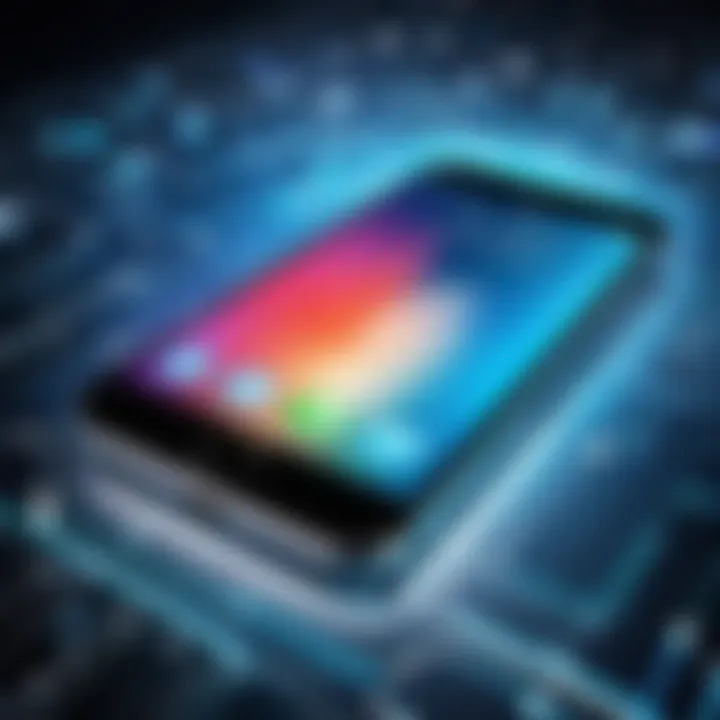
- Samsung has recent developments in foldable phones and camera technology. They focus on enhancing user customization, appealing to a diverse audience. Their latest Galaxy series aims for gamers and photographers.
- Google leverages its software expertise with its Pixel lineup, known for AI-driven photography and clean Android interfaces. Their seamless integration of services attracts a segment that values software over hardware.
- OnePlus is making waves with its competitive pricing and features. Their strategy includes direct sales channels and a loyal community.
The presence of these companies forces Apple to consider how the next iPhone fits within consumer choices. Developing unique features like advanced AI, better camera systems, or pricing strategies may prove essential in maintaining market share.
Consumer Trends and Preferences
Consumer trends are continuously evolving, driven by changing preferences and technological advancements. Here are some key factors to consider:
- Sustainability: There is a growing concern among consumers regarding the environmental impact of their devices. Many are now preferring brands that prioritize eco-friendly practices. Apple has initiated some sustainability measures, but increasing focus might be beneficial.
- Performance and Hardware: Many users want devices that perform seamlessly under multitasking and gaming conditions. Thus, speed and hardware capabilities are increasingly influencing purchasing decisions.
- 5G Technology: As 5G coverage expands, consumers are keen to own devices that support this technology. This trend is likely to accelerate as more services and features become available exclusively on 5G networks.
- Camera Features: The demand for advanced camera features continues to rise, impressing consumers through social media platforms. Technologies that enhance photography, like improved low-light capabilities or AI enhancements, capture public interest.
In conclussion, market dynamics paint a complex picture for Apple's strategy. Both competitor movements and evolving consumer tastes are essential to anticipate the next iPhone release. Understanding these factors will guide expectations and highlight Apple’s potential innovations in future models.
Technological Advancements
Technological advancements play a vital role in shaping the future of the iPhone. As Apple continues to innovate, understanding these technologies becomes essential for consumers and competitors alike. The impact of hardware improvements and software enhancements can influence overall performance, user experience, and market acceptance. In this section, we will delve into what can be expected regarding the iPhone's technological evolution.
Expected Hardware Innovations
With each new iPhone release, Apple typically introduces hardware innovations that enhance functionality and user experience. Expected developments may include:
- Improved Processor: Each new generation of iPhone usually comes with a faster and more efficient chip. The anticipated A16 or A17 chip is likely to continue this trend, offering enhanced processing power and battery efficiency.
- Advanced Display Technology: Rumors suggest the new iPhone might feature ProMotion technology across all models, providing a smoother display experience by increasing the refresh rate.
- Enhanced Camera System: While camera capabilities have seen consistent upgrades, the next iPhone could introduce new sensors or improved optics, enabling better low-light performance and advanced computational photography features.
- Battery Life Enhancements: With increased demands from new software features, longer-lasting batteries will likely become a primary focus. Innovations in battery technology, such as more efficient lithium-ion cells or the use of solid-state batteries, might be explored.
These expected hardware innovations not only provide consumers with a better product but might also give Apple a competitive edge against other smartphone manufacturers.
Software Enhancements in iOS
Software enhancements are just as important as hardware improvements in defining the user experience. The new version of iOS is expected to introduce features that align with evolving consumer needs. Some anticipated updates include:
- Refined User Interface: The upcoming iOS might bring a more user-friendly interface focused on accessibility and personalization, ensuring users can navigate seamlessly.
- Enhanced Security Features: In an age where data privacy is paramount, Apple has consistently emphasized user security. The next iOS is expected to deploy advanced encryption and biometric authentication methods.
- Innovative App Capabilities: Adding new features to existing apps or introducing new applications could enhance productivity. Improvements in multitasking and more robust integration with other devices may also be anticipated.
- Augmented Reality Applications: With AR continuing to grow, Apple may integrate more robust AR features within iOS, paving the way for innovative experiences using the iPhone.
Technological advancements are critical not just for meeting consumer expectations but for maintaining Apple's leadership in a rapidly evolving tech landscape.
In summary, the advancements in hardware and software for the next iPhone release will significantly affect how consumers interact with their devices. Understanding these innovations is essential for anyone interested in the smartphone market.
Speculative Features of the Next iPhone
Anticipation for the next iPhone release is always heightened with the discussion of its possible features. Speculative features are essential in framing consumer expectations and industry standards. They reflect what users desire and what Apple may deliver. This area of inquiry also points to broader technological trends. In addition, it can indicate how Apple intends to position itself against competitors. Understanding these features adds depth to our overall analysis of the upcoming iPhone model.
Potential Design Changes
One area of speculation revolves around potential design changes. Over the years, Apple has maintained its signature aesthetic, yet each new iteration brings subtle tweaks. The transition from the iPhone 12 to the iPhone 13 exemplified this approach. It is possible we may see a thinner frame, different materials, or even advances in screen technology. For instance, rumors suggest a shift towards a more environmentally sustainable production that may influence material choices. This not only aligns with Apple's commitment to sustainability but also appeals to environmentally conscious consumers. The integration of a punch-hole camera could also maximize the screen area, presenting a more immersive user experience.
Camera Capabilities
The iPhone's camera system consistently garners consumer interest. Generations of improvements have set a high standard in mobile photography. Future iterations may introduce enhanced capabilities that further elevate this reputation. Expectations around improvements include higher megapixel counts and advanced low-light performance. For example, the rumored transition to a periscope lens could enhance optical zoom significantly.
Moreover, the integration of artificial intelligence in photography applications could streamline user experience. Features like computational photography have already proven successful in previous releases. Upgrades in camera sensors may also facilitate advanced functionalities like better image stabilization and superior night mode performance. These enhancements are targeted towards both amateurs and professional users who rely on their devices for high-quality visuals.
Battery Life Enhancements
Battery life improvements remain a pivotal point of speculation. As mobile devices become more powerful, energy consumption naturally increases. While the iPhone offers competitive battery life, user feedback generally indicates a desire for more enduring performance. Future iPhones may incorporate larger battery capacities while maintaining sleek designs.
Technological advancements in chip efficiency could also be a focus area. The A15 Bionic chip, used in current models, showcased a significant leap in energy efficiency. Apple might apply similar strategies in their next generation, optimizing power consumption further. Enhancements in fast charging and possibly wireless charging speeds are also anticipated. With potential features like solar charging, there could be a significant shift in how users think about battery life and longevity.
"The future of mobile technology lies not just in performance but in ensuring devices remain usable for longer periods without constant recharging."
Marketing Strategy
An effective marketing strategy is crucial for any major product launch, especially for a highly anticipated item like a new iPhone. This section will highlight the importance of marketing for the upcoming release, examining how it shapes consumer perception and drives sales. The right approach can create buzz and excitement well ahead of product availability. Understanding the nuances of marketing strategies employed by Apple offers a glimpse into the company's connection with its audience.
Pre-Release Hype

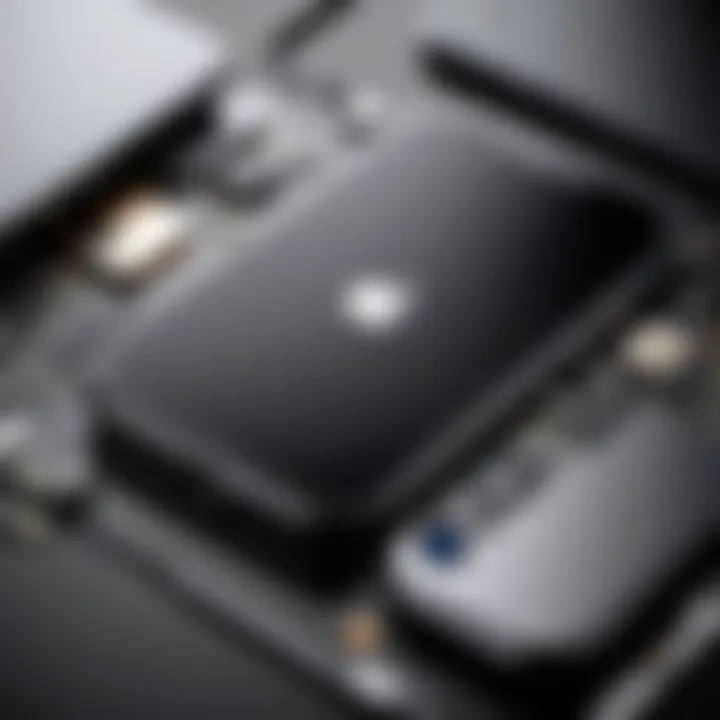
The pre-release hype surrounding an iPhone launch is no small feat. Apple has mastered the art of anticipation, leveraging every available medium to build excitement. This phase begins months in advance and relies heavily on product speculation, leaks, and rumors. An important aspect to consider is the role of social media platforms such as Facebook, Reddit, and Twitter, where unofficial information spreads rapidly. This dialogue among users amplifies curiosity and expectations.
The benefit of maintaining this hype is twofold. First, it keeps the brand at the forefront of consumer minds, ensuring that when the launch day arrives, potential buyers are already engaged. Second, it can significantly impact initial sales numbers, as customers are more likely to purchase with a heightened sense of urgency.
Apple’s marketing teams often tease features and design elements without revealing too much detail. This creates a fertile ground for speculation, ensuring that conversations about the product remain alive. Furthermore, solid pre-release marketing not only builds anticipation but also enhances loyalty among existing customers.
Launch Event Planning
The planning of the launch event itself is vital in the marketing strategy. Apple usually opts for a well-orchestrated event that serves as a major media spectacle, drawing attention from tech enthusiasts and general audiences alike. It is usually held in the fall and streamed online, attracting millions of views worldwide. This event is not merely about unveiling a new product; it is a carefully crafted experience designed to showcase Apple's brand values and vision.
The meticulous planning of these events focuses on various elements:
- Inviting Influencers and Press: Apple strategically invites industry leaders, influencers, and members of the press to generate immediate coverage and discussion.
- Setting the Stage: The presentation style focuses on clarity and enthusiasm, ensuring that key features of the new iPhone are highlighted effectively.
- Post-Event Engagement: Following the launch, Apple continues to engage its audience through targeted advertising and detailed follow-up campaigns that explain the benefits and innovations of the latest model.
Consumer Anticipation
Understanding consumer anticipation is crucial in the context of iPhone releases. This phenomenon shapes not only the market dynamics before the official announcement but also influences long-term brand loyalty and consumer behavior. The desire for the next iPhone model often starts long before the actual launch date. This anticipation can drive pre-orders, sales, and even the pricing strategies employed by Apple.
Public Expectations
Public expectations around new iPhone releases are frequently high. Many consumers expect significant advancements in technology, such as improved performance, enhanced photography features, and longer battery life. These anticipations are fueled by past releases and the innovative legacy of Apple's products.
The buildup to a new iPhone launch can culminate in what might be described as a cultural event. Public opinion can vary widely, from enthusiasm to skepticism. Apple has historically been known for making bold claims about its products, so consumers have learned to balance their expectations with reality. This tension can lead to disappointment if the actual product does not meet consumer hopes. Thus, understanding these expectations is critical for Apple and for industry analysts who track the company's performance.
Impact of Rumors on Popularity
Rumors play a significant role in shaping consumer anticipation for upcoming iPhone releases. Speculation about new features or design changes often stirs excitement within the technology community. Engaging discussions take place on forums like Reddit or social media platforms such as Facebook.
However, the influence of these rumors is double-edged. Positive rumors can lead to a surge in consumer interest, while negative speculation can dampen enthusiasm.
"The impact of rumors on popularity is substantial, often resulting in fluctuations in stock prices and immediate shifts in consumer sentiment."
Companies and analysts also watch these trends closely, as consumer hype can significantly impact pre-sale success. Rumors can shape public perception, thus creating a ripple effect that influences overall market trends and competition.
In summary, consumer anticipation encapsulates a spectrum of expectations shaped by past experiences and speculative narratives. Properly managing this anticipation is fundamental for Apple, as it navigates through the complexities of the technology market.
Economic Factors Related to New Releases
The topic of economic factors surrounding new iPhone releases is critical to understanding how Apple positions itself in the competitive smartphone market. Key to Apple's strategy is how the pricing of new devices will affect consumer behavior and sales performance. Changes in pricing strategies can greatly influence consumer purchasing decisions, especially in a saturated market. Additionally, economic elements such as inflation, consumer confidence, and overall economic health can set the stage for the success or failure of a new release.
By analyzing these factors, one can gain insights into how Apple adjusts its strategy to maintain market share and profitability while responding to evolving consumer demands and competitive pressures.
Pricing Strategies
Pricing strategies play an essential role in the introduction of every new iPhone model. Apple has traditionally employed a premium pricing strategy. By positioning the iPhone as a luxury and high-quality product, Apple attracts consumers willing to pay a higher price for perceived value. This begins with the pre-release rumors and leaks that generate initial excitement about the new model.
Prices also reflect the costs of innovations and improvements. Each generation typically sees enhancements in technology, design, and functionality, which justify higher price points. Moreover, pricing is also related to the competitive landscape. As rival companies like Samsung continue to innovate and lower prices for their flagship models, Apple must assess whether to follow suit or stick to their premium pricing approach.
Some key considerations in pricing strategies include:
- Market Analysis: Understanding competitor pricing is essential to make informed decisions.
- Consumer Sentiment: Assessing how consumers value features against the price can guide pricing levels.
- Geographic Variance: Prices may need to be adjusted based on local economic conditions and purchasing power.
Market Response and Sales Forecasts
Understanding market response is crucial to anticipating how a new iPhone will perform after its release. Market response includes how consumers react to pricing, features, and marketing campaigns surrounding the launch. From analyzing past releases, one can gauge general trends in consumer enthusiasm and adaptability to new product specifications.
Sales forecasts are inherently tied to economic factors, such as supply chain considerations and global demand. Industry analysts often look at pre-orders, early sales data, and customer feedback to estimate how well the iPhone is likely to sell. This can also involve examining broader economic conditions such as disposable income levels and consumer spending habits.
In summary, the combination of effective pricing strategies and accurate market response analysis greatly influences the success of the new iPhone release. For Apple, these economic factors are not merely operational details; they are essential drivers that shape the overall strategy and future viability in the tech sphere.
"Effective pricing strategies not only reflect product value but also consumer expectations and market dynamics."
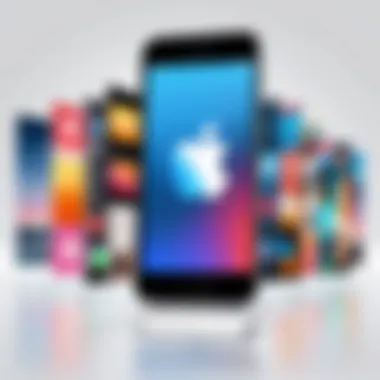

Addressing these economic aspects provides depth to the understanding of how upcoming iPhone releases are more than just technical upgrades. They become a dance between innovation, expectation, and financial viability.
Environmental Considerations
Environmental considerations have emerged as crucial elements in the tech industry, especially in the context of smartphone releases such as the iPhone. Consumers and stakeholders alike are increasingly aware of the environmental impact of technology. This awareness drives companies like Apple to address sustainability and environmental ramifications of their products more effectively.
By examining these aspects, we can understand how the iPhone's development reflects broader trends toward eco-friendliness. It is not just about selling devices; it is about how these devices influence the planet. This section delves into Apple's sustainability initiatives and recycling programs for old devices, highlighting the importance of these strategies in shaping both consumer choices and the company's brand identity.
Sustainability Initiatives
Apple has been a pioneer in integrating sustainability into its business model. The company aims to create products with minimal environmental impact. From using recycled materials to reducing carbon emissions in manufacturing processes, Apple takes a multifaceted approach to sustainability.
A notable example of this commitment includes:
- Renewable Energy Use: Apple reports that all its facilities run on renewable energy.
- Recyclable Materials: The company has increased the use of recycled aluminum in iPhone casings.
- Supply Chain Innovation: Apple works closely with suppliers to enhance sustainability practices throughout the supply chain.
Their long-term goal is to have a closed-loop supply chain. In such a system, all materials would be recycled and reused, eliminating the need for new raw materials. This initiative not only benefits the environment but also appeals to eco-conscious consumers seeking sustainable products.
Recycling Programs for Old Devices
Recycling programs play a vital role in Apple's environmental strategy. With millions of iPhones in circulation, the accumulation of electronic waste poses significant concerns. Apple has developed various programs that encourage users to recycle old devices responsibly.
Some key components of these recycling programs are:
- Trade-In Program: Customers can trade in their old iPhones for credit toward new purchases. This not only promotes recycling but also incentivizes upgrades.
- Apple's Recycling Robots: Using robots like Daisy, Apple disassembles old devices to recover valuable materials.
- Public Awareness Campaigns: Apple invests in educating consumers about the benefits of recycling and how to participate in these programs effectively.
By focusing on the lifecycle of products and advocating for recycling, Apple addresses the environmental challenges associated with smartphone usage. Such efforts not only strengthen its market position but also contribute positively to global sustainability goals.
"Sustainability is not a trend; it is a responsibility that we must embrace to ensure a healthier planet for future generations."
Future Projections for iPhone Evolution
Understanding the future projections for iPhone evolution provides critical insight into the trajectory of smartphone technology. This section examines how upcoming innovations can impact not just Apple, but the entire industry. The anticipated advancements often serve as benchmarks that other manufacturers aim to meet or exceed. Therefore, knowing these projections can aid consumers in making informed decisions while also planning what features to expect in future models.
Long-Term Technological Trends
The long-term technological trends indicate a shift towards integrating artificial intelligence into handheld devices. Features such as enhanced voice recognition and personalized user experiences are becoming standard. Additionally, the rise of 5G technology sets a precedent for faster internet speeds and decreased latency. This opening up of new possibilities will likely lead to more demanding applications that require robust device capabilities.
"The next generation of iPhones will prioritize not just hardware but also intelligent software enhancements, leading to a more seamless user experience."
Moreover, advancements in battery technology may dramatically change how users interact with their devices. Current trends suggest a move towards longer-lasting batteries that charge faster and are more sustainable. This emphasis on efficiency aligns with increasing consumer awareness of ecological issues.
Anticipated Consumer Behavior Changes
A shift in consumer behavior is expected as technology continues to evolve. Users are becoming more discerning and are increasingly prioritizing features that offer real-world benefits. For example, enhanced privacy controls and more intuitive interfaces will likely take precedence over merely flashy designs.
Furthermore, there is a rising trend towards purchasing devices that reflect environmental responsibility. Consumers are not only seeking the latest gadgets but also want to ensure that these devices are sustainable. This change means that Apple will have to not only innovate technologically but also engage in ethical practices concerning sourcing materials and recycling products.
In summary, understanding these future projections for iPhone evolution highlights the significance of technology's role in shaping consumer expectations and industry standards. As we anticipate the next iPhone release, acknowledging these trends will help clarify the likely direction of smartphone innovation.
Summary of Insights
Understanding the Summary of Insights is crucial in framing the context for the anticipated release of the next iPhone. This section encapsulates the findings presented throughout the article. It crystallizes the expected impact of new features, market dynamics, and Apple's historical context on consumer behavior and industry competition. The readers will benefit from grasping key outcomes that emerge from the intricate analysis undertaken, allowing for informed decisions and expectations surrounding the upcoming iPhone.
Through concrete takeaways and thoughtful reflections, this section aims to guide readers on what to expect and how to interpret the shifting landscape of smartphone technology. It equips readers with a lens through which they can better comprehend the ongoing changes and future potential of the iPhone in their lives.
Key Takeaways
- Historical Significance: Apple's past release patterns reveal a consistent strategy that shapes consumer anticipation and brand loyalty.
- Emerging Technologies: Innovations in hardware and software are expected to redefine user experience, including enhancements in camera technology and battery performance.
- Market Response: Competitor strategies play a significant role in shaping the acceptance and sales performance of new iPhone models.
- Consumer Behavior: Understanding shifts in consumer preferences is essential. Many gadget lovers are looking for sustainability alongside advanced technology in their devices.
- Economic Factors: Pricing strategies will influence market reception. Expected pricing changes could dramatically affect consumer choices.
Final Thoughts on Upcoming Releases
As we look ahead to the next iPhone release, it is evident that a multitude of interrelated factors will dictate its reception. Apple's ability to leverage its historical insights while navigating current market dynamics will be crucial. For consumers, the excitement is balanced with realistic expectations driven by nuanced understanding of rumors and market trends.
In summation, the expectations surrounding the iPhone are far more than simple tech upgrades. They reflect broader trends in technology, consumer behavior, and economic forces.
Staying informed is key. By understanding the nuances outlined in this article, consumers can better navigate the complexities of technology releases and make enlightened purchasing decisions.



